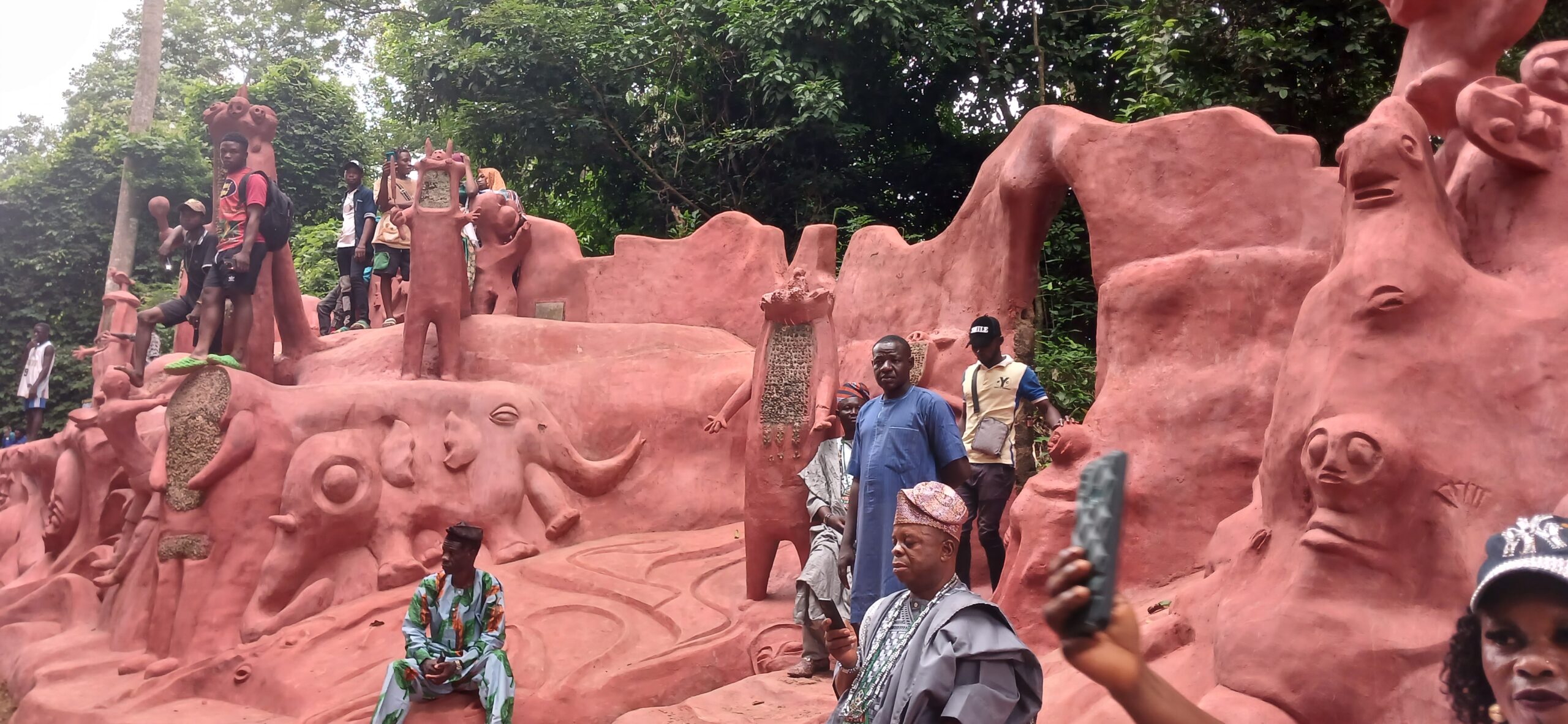
Artwork by SteadyWins, Licensed Under CC BY-SA 4.0
Osun-Osogbo Sacred Grove: A Sacred Yoruba Forest
greensafariguide.com
Introduction
The Osun-Osogbo Sacred Grove, located along the banks of the Osun River in southern Nigeria, is one of the last remaining sacred forests in the Yoruba religion. This grove is dedicated to Osun, the Yoruba goddess of fertility, water, and love, and is considered the spiritual home of the Osun deity. It is a unique cultural and religious site that symbolizes the deep connection between the Yoruba people and nature. The Osun-Osogbo Sacred Grove was designated as a UNESCO World Heritage Site in 2005 due to its cultural significance and efforts to preserve traditional religious practices in the face of modernization.
Cultural and Religious Significance
The Osun Deity
In Yoruba mythology, Osun is one of the most powerful orishas (deities). She is the goddess of water, fertility, and healing, and her spirit is believed to reside in the Osun River, which flows through the sacred grove. The grove itself is seen as a manifestation of Osun’s divine power, and it is a place of worship, pilgrimage, and cultural celebration for the Yoruba people.
The Osun-Osogbo Festival
The annual Osun-Osogbo Festival is one of the most important events in Yoruba culture. Held every August, the festival attracts thousands of pilgrims and tourists to the sacred grove to honor Osun. Rituals, prayers, and offerings are made to the goddess, and the festival is celebrated with traditional music, dance, and cultural performances. The festival also serves as a celebration of Yoruba identity and cultural pride.
The Sacred Grove and Its Shrines
Layout of the Grove
The Osun-Osogbo Sacred Grove is home to a series of shrines, sanctuaries, and sculptures dedicated to Osun and other Yoruba deities. Scattered throughout the grove are beautifully crafted sculptures by artists, most notably Suzanne Wenger, who played a significant role in revitalizing the grove and preserving its spiritual significance. The sculptures, depicting various deities and mythological figures, blend seamlessly with the natural environment, creating a mystical and spiritual atmosphere.
The Central Shrine
The central shrine of Osun, located deep within the grove, is the most important site for worshippers. Offerings are made here to seek Osun’s blessings for fertility, health, and protection. The shrine’s architecture, built with traditional methods, blends with the surrounding forest, reinforcing the connection between the Yoruba people, their deities, and nature.
Preservation and Challenges
Preservation of the Grove
The Osun-Osogbo Sacred Grove has faced challenges over the years, particularly as urban development and deforestation encroach upon sacred sites in Nigeria. However, the grove has been carefully preserved thanks to the efforts of the Osogbo community, local religious leaders, and international organizations. Since its inscription as a UNESCO World Heritage Site in 2005, various initiatives have been put in place to protect the forest and its shrines, ensuring that traditional Yoruba spiritual practices can continue.
Cultural Renaissance
The grove has experienced a cultural renaissance, particularly due to the work of Suzanne Wenger and her New Sacred Art Movement. Wenger, an Austrian artist, worked with local artists and priests to restore and maintain the sacred grove’s significance. The sculptures and art within the grove serve as a cultural bridge, helping to preserve Yoruba traditions in a modern world.


Visiting the Osun-Osogbo Sacred Grove
Travel Tips
- When to Visit: The best time to visit is during the Osun-Osogbo Festival, held in August, when the grove comes alive with vibrant cultural celebrations.
- What to See: Explore the sacred shrines, statues, and the Osun River itself. A visit to the Osun Shrine is a must for those seeking to understand the spiritual essence of the grove.
- Respectful Tourism: While the grove is open to tourists, it remains a deeply spiritual place. Visitors are encouraged to be respectful of the religious practices and cultural norms observed within the grove.
The Osun-Osogbo Sacred Grove is more than just a UNESCO World Heritage Site; it is a living, breathing symbol of the Yoruba people’s spiritual and cultural identity. The grove’s significance lies in its ability to preserve traditional beliefs and practices in the face of modernity. For those seeking to experience the richness of Yoruba culture and spirituality, a visit to the Osun-Osogbo Sacred Grove offers a rare opportunity to witness the harmonious relationship between nature, art, and religion.
Through its preservation efforts and annual festival, the grove continues to thrive as a sacred space, providing insight into the enduring power of tradition, cultural pride, and spiritual connection.

